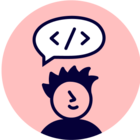When I was first introduced to the Agile world, I had yet to learn what the Agile manifesto was about. Slowly and steadily, I started learning more and more about how “Being Agile” and “Doing Agile” are equally important.
I am part of the Miro Solutions Engineering team based in Sydney, and some of the way we “Do Agile” within our Global Solutions Engineering team is by making use of
1) Retro templates (sync and async way) - to ensure we are constantly improving and getting feedback from all across the globe.
2) OKR templates to make our Objective and Key Result Visible for our team and wider Miro Org.
3) Miro-Jira integration by making work visible for our internal SE team within Miro, effective collaboration/feedback and also tracking within Jira.
4) Making use of an exciting new capability which will be revealed/public beta in our upcoming Distributed ’22 for talking through the content and ideas for our geographically distributed team. Stay tuned
And Finally, my personal favourite 5) Onboarding which helps us to be culturally aligned, avoids many contexts switching and gets ready for success from Day One with Miro :)
Keen to learn and get your thoughts- How are you all Doing Agile with Miro? Also, how do you see Miro to be beneficial as we are Scaling Agile across multiple teams?🙏🏽



